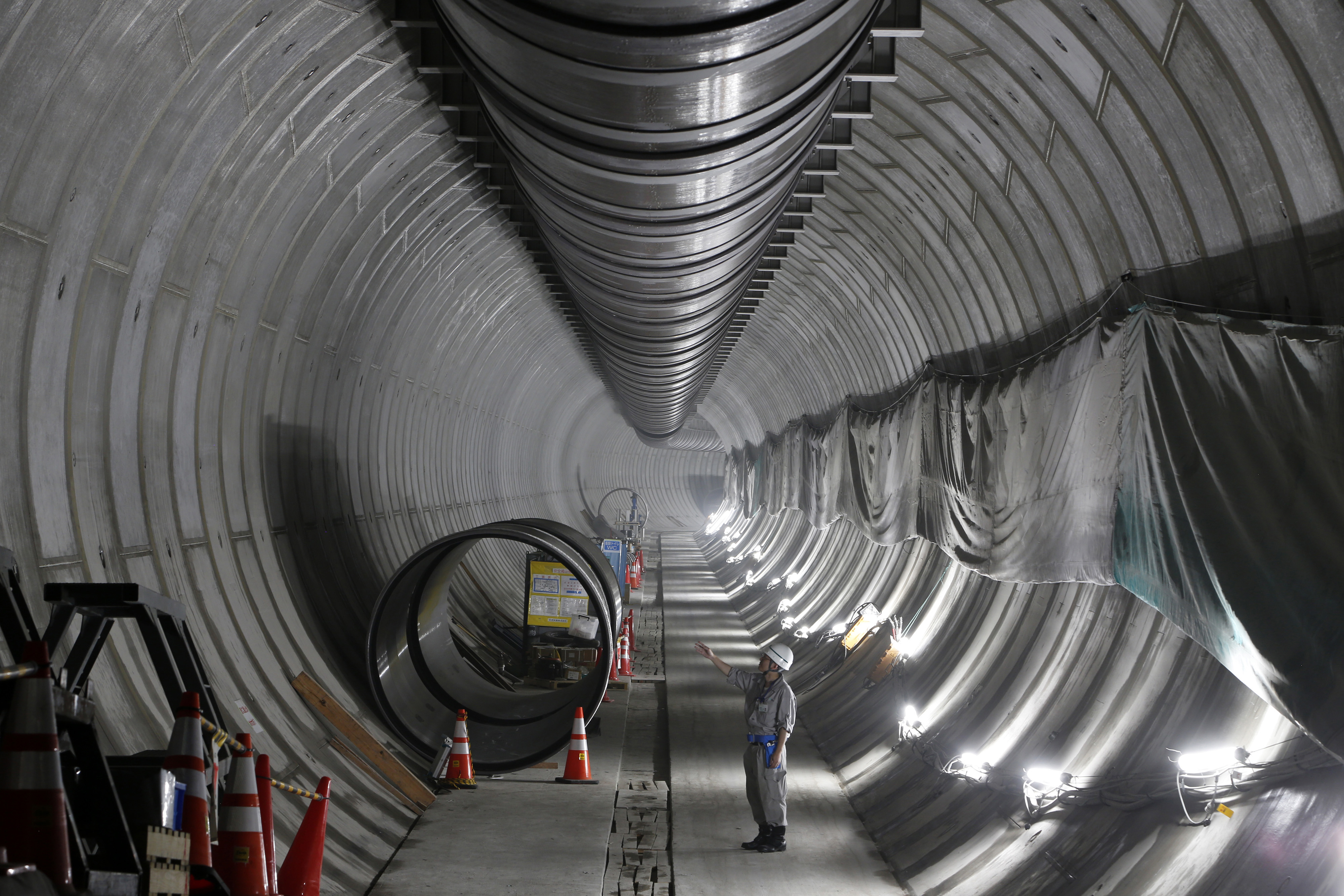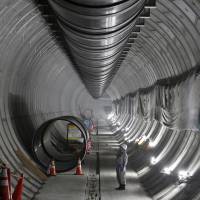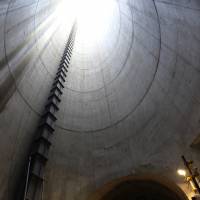Below the condos and boutiques of Tokyo's upscale Minato Ward — which includes Roppongi Hills, home to Goldman Sachs Group's Japan headquarters — a boring machine has carved out the city's newest defense against floods.
"There are many buildings, there's a freeway," said Satoshi Yamamoto, who's directing the Tokyo Metropolitan Government's ¥24.5 billion project to build a giant subterranean reservoir — the second of three — to handle flood waters from the Furukawa River that winds through the area. "We decided the best approach was to go underground."
When it's completed in 2016, the 3.3-km-long tunnel-shaped reservoir, which is 7.5 m in diameter, will be able to handle 135,000 cu. meters of water, enough to fill 54 Olympic-size swimming pools. Tokyo is becoming increasingly reliant on this unique-to-Japan solution as more typhoons hit the country each year, a trend that Yamamoto said may be linked to global warming. The flooding is exacerbated by the city's sprawling concrete footprint, which keeps rainwater from seeping naturally into the ground.
"Japan has no choice," Marcelo H. Garcia, director of the Ven Te Chow Hydrosystems Laboratory at the University of Illinois at Urbana-Champaign, said in a phone interview. "With the lack of space they have, they have to come up with some ingenious way of doing this."
The area is especially flood-prone because of the proximity of buildings and roads to the river, which runs above-ground from near the busy Shibuya subway and train station to Tokyo Bay, according to the Tokyo Metropolitan Government's construction office.
A storm equivalent to the so-called Tokai Downpour in 2000, when hourly rainfall exceeding 11 cm burst levees in Nagoya, would cause flooding over 2 meters deep in some areas of Minato Ward, according to the area's disaster planning map.
The underground reservoir project was approved in 2008 after a series of devastating storms, including a 2004 typhoon that flooded nearby Azabu-Juban subway station, Yamamoto said. Residents asked for anti-flood measures after suffering widespread damage to their properties, he said.
During heavy rain, water will flow into an intake channel on the Furukawa's southern bank when it gets too high, much like the overflow hole in a bathroom sink. It will descend 52 meters — about 16 stories — down a drop shaft into a tunnel that follows the river's curves, at one point passing beneath the tracks of the Namboku subway line. Once the storm subsides, the water will be pumped to the surface about 2 km downstream.
"It's pumped back up to the river," Yamamoto said.
On a recent afternoon, the tunnel's oxidized metal skeleton was still visible near the bottom of the drop shaft, where its ceiling had not yet been covered over with cement. Workers in light blue coveralls and white hard hats drove forklifts along the floor of the tunnel, cut by contractor Tobishima Corp. using a cylindrical boring machine working at a rate of 14 meters a day.
Together with a separate 3.2-km-long reservoir under construction in the northwest of the city, the Furukawa project represents a tripling down on a method that's been stemming floods since initial construction on the city's first such tunnel was completed in 1997.
The approach derives from the standard flood-control method used in other cities, where water is pumped to above-ground reservoirs during storms. Chicago, for example, stores water and sewage in a nearby quarry during periods of heavy rain.
"What makes this system particularly noteworthy is just its scale, because it's underneath one of the largest cities in the world," said Patrick Lynett, a civil engineering professor who studies cities' water-management tactics at the University of Southern California in Los Angeles. "It allows them to have this flood control out of sight."
Tokyo's size and density leave it no space for a typical above-ground solution. The Tokyo-Yokohama metropolis is the world's second-biggest by land area after the New York City area, with more than double New York's density, according to data compiled by the London-based City Mayors Foundation.
It's also facing more occurrences of flooding as the frequency of storms increases. The city's first underground reservoir, which is even larger than the Furukawa project, was called into action five times last year, compared with a usual rate of once or twice per year, according to Yoshiaki Takahashi, who oversees the facility in western Tokyo. It was used most recently on Aug. 10, when Typhoon Halong, the 11th of the season, poured 17 mm of rain in an hour on the capital.
That reservoir absorbs overflow from three rivers and was built after a typhoon in 1993 flooded more than 3,000 homes, causing ¥15.6 billion in damages, according to Takahashi.





















With your current subscription plan you can comment on stories. However, before writing your first comment, please create a display name in the Profile section of your subscriber account page.